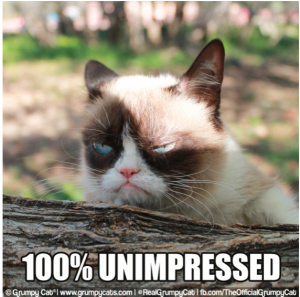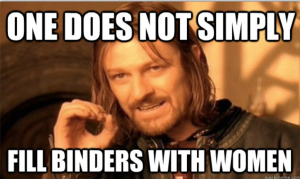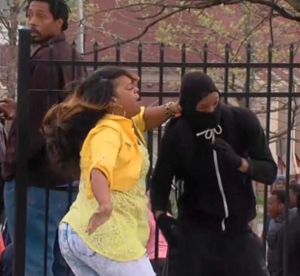Guest Blogger Victoria Mathew ’19
 Meet Grumpy Cat. At first glance, you might not think that he has much to contribute to high-brow pursuits like rhetorical discourse. He’s just a meme. A trend. Or as Richard Dawkins might say “a unit of cultural transmission, or a unit of imitation” that will pass much like other “tunes, ideas, catch-phrases, clothes fashions, ways of making pots or of building arches” before it (Wetherbee, 2). However, to a man who spent his childhood hiding from bombs in Lebanon, Grumpy Cat might signify much more than a silly fad. It might remind him of how day in day out he sees the English students that he teaches being ungrateful and unhappy with their comparatively stable lives.
Meet Grumpy Cat. At first glance, you might not think that he has much to contribute to high-brow pursuits like rhetorical discourse. He’s just a meme. A trend. Or as Richard Dawkins might say “a unit of cultural transmission, or a unit of imitation” that will pass much like other “tunes, ideas, catch-phrases, clothes fashions, ways of making pots or of building arches” before it (Wetherbee, 2). However, to a man who spent his childhood hiding from bombs in Lebanon, Grumpy Cat might signify much more than a silly fad. It might remind him of how day in day out he sees the English students that he teaches being ungrateful and unhappy with their comparatively stable lives.
 In the situation above, the teacher sees an exigence, or a “kind of need or problem that can be addressed and solved through rhetorical discourse” (Grant-Davie 266). I would like to argue that there ought to be more rhetors like him who see and react to the problems reflected in memetic culture. How can a rhetorical discourse be created around a meme? According to Keith Grant-Davie, any aspiring rhetor must be able to answer three questions in order to effectively persuade his audience. A look at two scholarly articles with two of these questions in mind will show us that memes can be highly useful springboards for such persuasion.
In the situation above, the teacher sees an exigence, or a “kind of need or problem that can be addressed and solved through rhetorical discourse” (Grant-Davie 266). I would like to argue that there ought to be more rhetors like him who see and react to the problems reflected in memetic culture. How can a rhetorical discourse be created around a meme? According to Keith Grant-Davie, any aspiring rhetor must be able to answer three questions in order to effectively persuade his audience. A look at two scholarly articles with two of these questions in mind will show us that memes can be highly useful springboards for such persuasion.
 The first question that Grant-Davie proposes regarding exigence is “what is this discourse about?”(267). He brings up the point that rhetorical discourses often address and are stimulated by specific situations, but in order to be an effective means of persuasion, a rhetorical discourse should connect to broader, more socially relevant themes as well. In other words, both the audience and the rhetor should understand “what values are at stake?” following the discourse (267). In his article, Wetherbee fixated on the “binders full of women” meme shown below and how it provoked such an intense response from the electorate that it was a game changer in the 2012 election. What values do you perceive to be at stake?
The first question that Grant-Davie proposes regarding exigence is “what is this discourse about?”(267). He brings up the point that rhetorical discourses often address and are stimulated by specific situations, but in order to be an effective means of persuasion, a rhetorical discourse should connect to broader, more socially relevant themes as well. In other words, both the audience and the rhetor should understand “what values are at stake?” following the discourse (267). In his article, Wetherbee fixated on the “binders full of women” meme shown below and how it provoked such an intense response from the electorate that it was a game changer in the 2012 election. What values do you perceive to be at stake?
The meme refers to a moment in the presidential debates when Governor Romney, in telling a story about searching for women to hire for the cabinet, described his staff as bringing him “binders full of women.” This struck a nerve with the American people because the attitude that informed the offensive statement was a problem in more places than the Romney administration. A rhetorical discourse that claimed “Mitt Romney is an anti-feminist pig” would have missed the point. As Wetherbee put it, voters were up in arms about the “ binders full of women” statement because it spoke to the gender inequity found in workplaces nationwide. The meme provided a national platform for conversations about equal opportunity for women.
The second question that Grant-Davie proposes is “ Why is this discourse needed?” (268). Specifically, he asks the rhetor to ask himself or herself, “What about the current situation demands that it be addressed at that moment?” (268). For Armond R. Towns, author of “That Camera Won’t Save You! The Spectacular Consumption of Police Violence,” it was the new policy requiring policemen to wear cameras that drove him to speak up. In his view, this policy is mistaken in its attempt to prevent police violence against blacks because the problem is bigger than individual acts of violence. Citing evidence like the highly circulated meme pictured below, he blames a spectacular appetite and crude fascination with violence against black people as the central problem.
 The meme left shows Toya Graham beating her son for rioting. Toya received approval for trying to protect her son, but Towns claims that, put in a different context, this meme would have yielded a different response. It is his argument that if it had been a white boy being beaten by his mother in the same way against the backdrop of a super market, then she would have been charged with child abuse. He cites the fact that photos of the dead bodies of Eric Garner and Michael Brown, black boys who were both murdered by policemen, can be found on knowyourmeme.com is evidence that normalization of violence against black people is a problem. It is his belief that attaching cameras to policemen and circulating videos of more black people being murdered will only exacerbate the issue, and memetic culture is the foundation of his thesis.
The meme left shows Toya Graham beating her son for rioting. Toya received approval for trying to protect her son, but Towns claims that, put in a different context, this meme would have yielded a different response. It is his argument that if it had been a white boy being beaten by his mother in the same way against the backdrop of a super market, then she would have been charged with child abuse. He cites the fact that photos of the dead bodies of Eric Garner and Michael Brown, black boys who were both murdered by policemen, can be found on knowyourmeme.com is evidence that normalization of violence against black people is a problem. It is his belief that attaching cameras to policemen and circulating videos of more black people being murdered will only exacerbate the issue, and memetic culture is the foundation of his thesis.
Clearly there is more to memes than meets the eye. Next time you see one that might seem silly to you, ask yourself what it might mean to someone else. Could you see this meme the way that the teacher saw Grumpy Cat in the first paragraph? Then, ask yourself, “What values do I see at stake?” in this meme and “Why might this provoke me to speak out?” Practicing this critical analysis of modern media will help you become a better informed rhetor and will help you discover what issues you are most passionate about.

 Follow
Follow